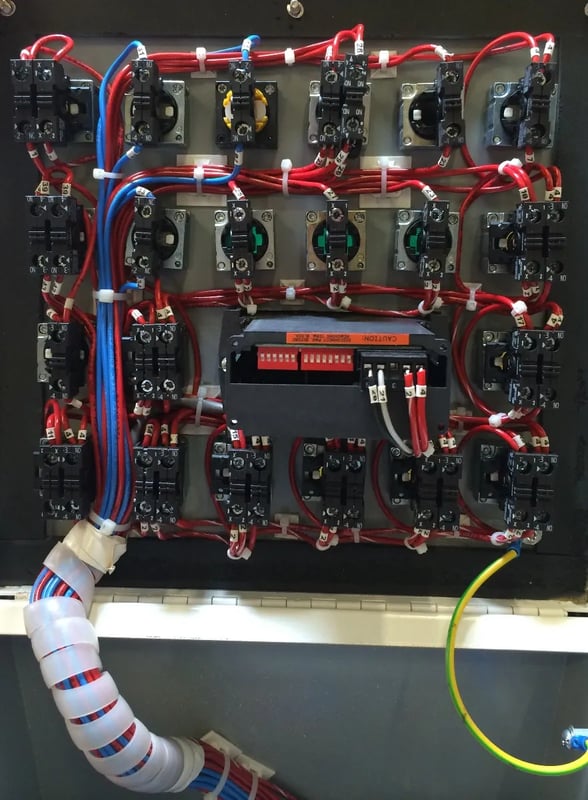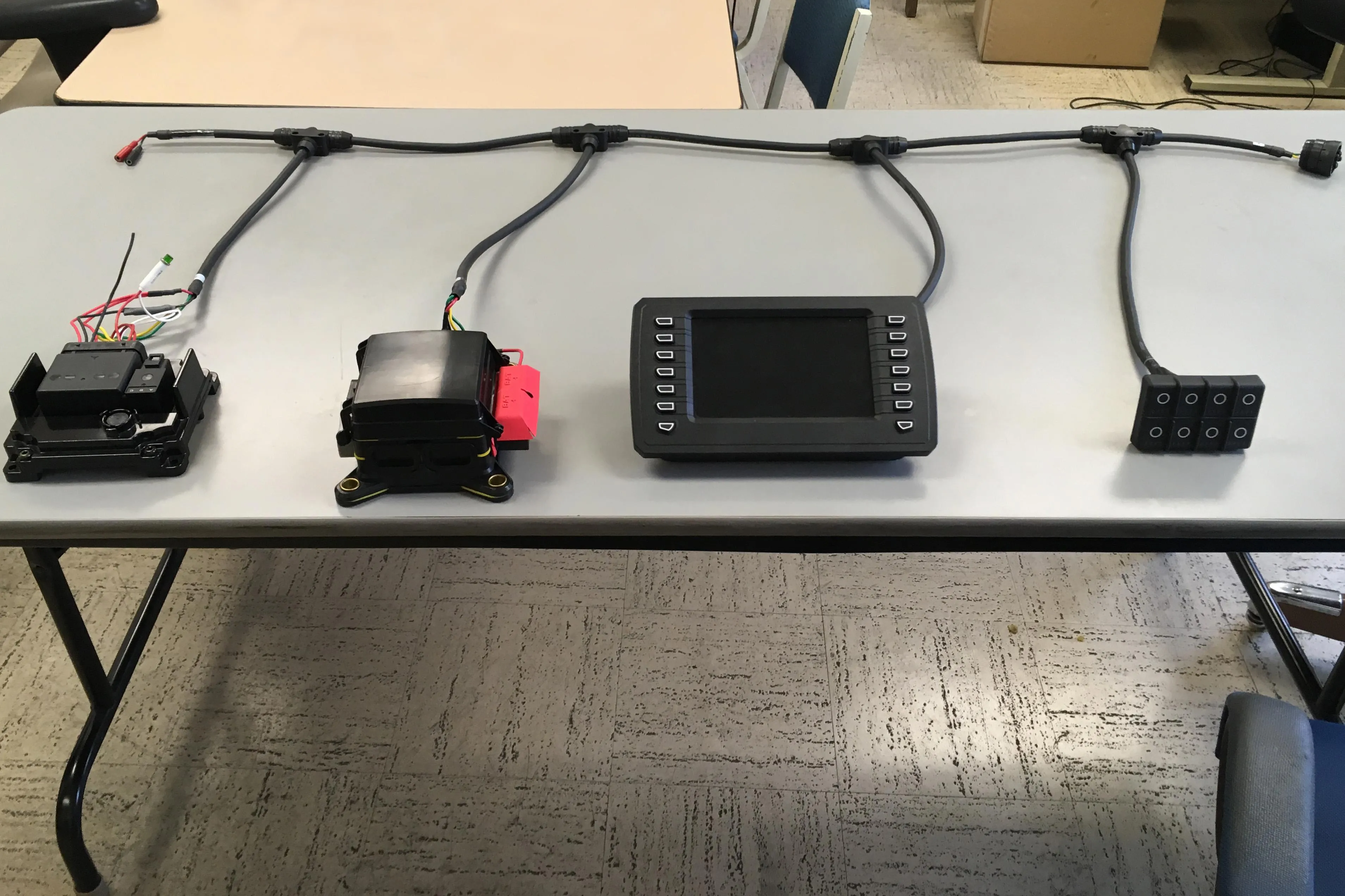5 Benefits of Using Can Wiring Over Point-to-Point Wiring
How a controller area network improves your hydraulic solution
1: Reduced Install Time
In point-to-point wiring each input/output (I/O) module is wired from the control box to the hydraulic component with multiple wires. The result is a tangled mess of wires that all must be connected, organized and routed, which takes time to install. CAN wiring simplifies this process by allowing each I/O module and hydraulic component to plug into the single network cable. Similarly, the PLC is plugged into the same wire.
2: Easier Troubleshooting
Point-to-point wiring is merely a signal between the I/O device and the machine. If the controls aren’t functioning properly, then every part of that connection must be manually checked. With CAN wiring, elements are plugged into the network and feed multiple signals to the controller. The PLC can be programmed to interpret these signals and display custom fault messages to the operator. For example, the PLC can recognize when the I/O device is connected, but the hydraulic component is not responding. The operator now knows where the fault is and can quickly address the problem.
 Point-to-point wiring requires a lot of individual connections and can be complicated to troubleshoot and repair.
Point-to-point wiring requires a lot of individual connections and can be complicated to troubleshoot and repair.
3: Simpler Failure Diagnosis
All data sent back to the controller is recorded, so if the machine fails, the information is still accessible. You can examine what the conditions were at the time of failure to help identify the cause. For instance, the data from a CAN-wired system may show that the temperature was abnormally high at the time of failure; however, in a point-to-point wiring system, there is no record of the conditions, just a signal of the current condition.
4: Faster and Easier Repairs
With the plug-in nature of CAN wiring, replacing a broken part is significantly easier and faster than point-to-point wiring. Replacing a component in point-to-point wiring requires the new component to be physically wired into the machine. However, CAN systems are a simple plug-in replacement, meaning component replacement is faster and with less chance of mistakes or damage to the machine.
5: Simplified Controller Update
Updating point-to-point controls is a long and exhaustive process since each wire needs to be rewired and connected from the controller to the machine component for each update. In a CAN system, the various inputs on the controller can be programmed to control any given component of the machine with a simple software update. Small changes and adjustments can be made easily, allowing for more flexible, responsive controls and every machine in your fleet, or in each facility, can be updated to the same control layout without rewiring each one individually.
Applied Fluid Power: Experts in CAN WiringAt Applied Fluid Power, our engineers are experts in CAN wiring and can work with you to implement a CAN system into your designs. Email, call or schedule a free one-on-one consultation today to learn more about how we can help. |

|


